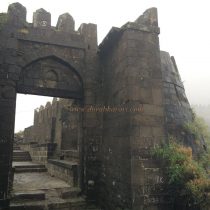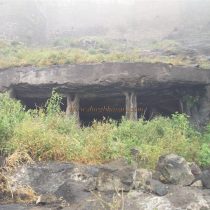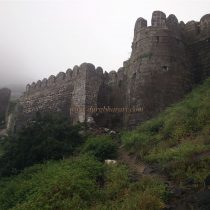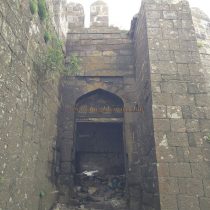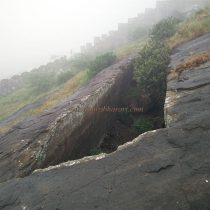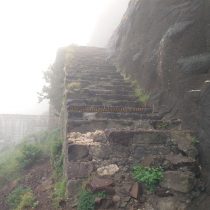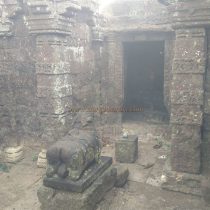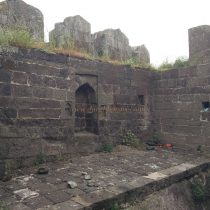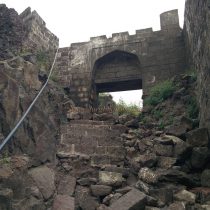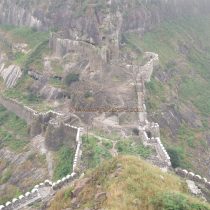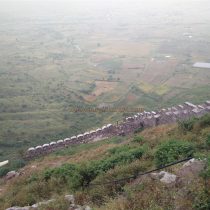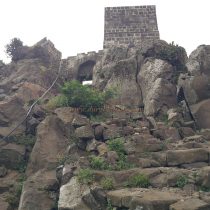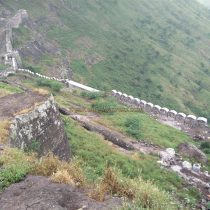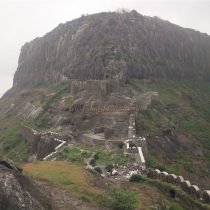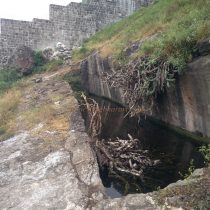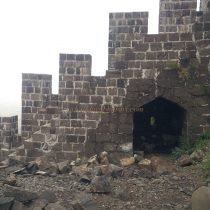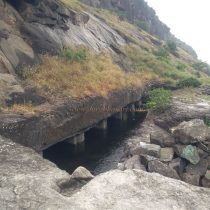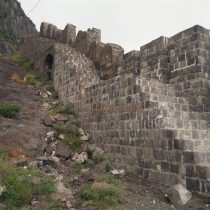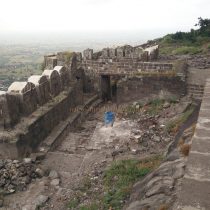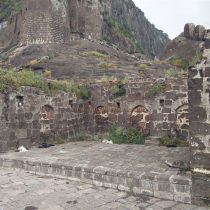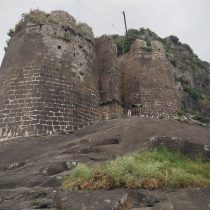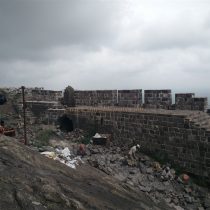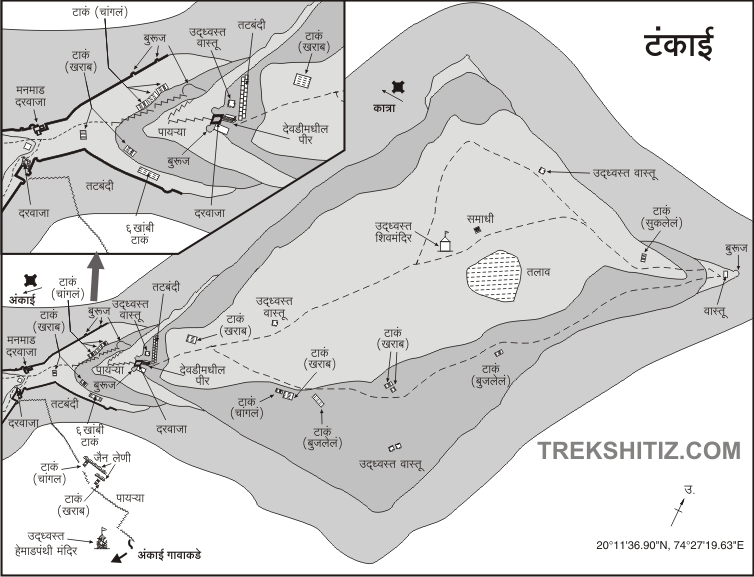TANKAI
TYPOE : HILL FORT
DISTRICT : NASHIK
HEIGHT : 2920 FEET
GRADE : MEDIUM
In the Nashik district and in main mountain ranges of Sahyadri Mountains we can see Selbari Dolbari Ajanta Satmala and likewise other small mountain ranges. Out of these ranges on the Ajanta Satmala range we have an important Ankai- Tankai fort. This fort plays an important role to keep match and control Surat- Aurangabad business oriented route and to make this fort powerful from all four sides in view of battle readiness we have Katra Mesana Gorakshgad and Manikpunj chain of smaller forts or Durg. On Tankai fort in the midst of fort we have ancient caves which indicates that fort was built in ancient times Yeola region in Nasik district where this fort is situated we have many options of travelling to the fort. On the foothills of the fort is village named Ankai and this village is 10km away from Manmad Railway station on Central Railway route and 1 km from Manmad Aurangabad road route and we get private vehicle service to come to Ankai village.
...
To go on fort we have one route from Manmad Aurangabad road and another route also goes to the fort from Ankai village. Both these routes are going to the fort in two different directions and two different gates on the fort. But they come and meet together on junction in the valley of Ankai Tankai valley. Out of these two routes, the route from Ankai village being frequently used is more useful. On entering the village we can see behind the village the walls of Ankai Tankai fort clearly on the Ankai Tankai Mountain. We have the route to the fort going enroute the village school and in the premises of the school and in the premises we can see a 20ft tall door arch with carved sculptures besides the arch. On the inside of the door we have shelters for the sentries. At a little distance away from school we can see 4 feet high and carved on all 4 sides a Satishila (stone) and on the bottom of this shila we see idols and scenes of hunting games carved on it. On Tankai fort at 1/4th height in the midlist of the fort a Jain cave is dug inside and the Indian archeological body have built steps to go there. From school to caves the journey takes approx. 10 mins. In the first cave we can see Ambika the Jain goddess and this goddess is given look of goddess Bhavani Mata. After seeing the caves we start climbing the mountain on rough steps we reach the first gate within 10mins. This door is hidden in between two bastion and a wall in front of the door to form a war strategy. Even though we enter the fort from east direction but on coming inside and turning right we enter the fort in southward direction door. The walls of the fort starting from the door cover the Ankai and Tankai fort on mountain. Just inside the door on the both sides we have shelters for the sentries and the damaged remains of doors are kept in these shelters. On climbing the steps and coming up we can see the second door which is accessible by the Manmad Aurangabad route. Going further ahead we can see this door clearly and completely. Even though we enter from the west end via this door the arrangement of this door the arrangement of this door is also like first door and outside of the door we have one wall in circular shape and one in square shape. Inside the door we have a shelter for sentries on one side and entrance to the fort on the other side. The wall blocking the door on the front side has collapsed. The walls on both side of the door cover the mountain area. The important observation made on this fort was that the openings for cannon firing are normally on the upper side but on this fort they are on the lower walls of the fort and a separate structure is constructed for them. In this journey our aim is to visit Tankai fort and hence with this fort in view we have described the scenario ahead. From Ankai village door after entering inside the left side of the mountain is Ankai fort area and the right side is area Tankai fort area. From the right side of fort while trekking we can see the scenario of the walls of fort, warfare area and sentry posts and then reach the initial steps carved in rocks and on continuing down words we see one below the other two water tanks and reach there. On the descend to get the water from the tanks steps are carved in the rocks to go down keeping the tanks on left side and walls on the right side and going ahead towards the protective walls of fort we see a tank of water dug in the rocks. By looking at the road leading to this tank carved in the rocks we come to the conclusion that it looks like store house and not tank for water. Above this stone house there is another tank and the way to this tank is from the upper side. After visiting the first tank we return back to the carved steps and from here on going towards the fort on the right side we see half carved rocks. On the way ahead on the left side there are three tanks which are not easily visible and hidden in carved rocks. Two of these tanks are like ware houses. To visit these tanks we have to go a little wayside on left side rocky path. After visiting the tanks we climb the 10-12 steps carved on the rocks and reach the built steps. Before climbing these steps and going alongside on the right hand side and going around the walls ahead we reach the 2nd tank above the first tank. After visiting the tanks enroute the constructed steps we reach the junction of the walls of the Tankai fort on the right hand side walls. Keeping the walls on left side and walking on distance of 5minutes then turning on right side below the Tankai fort door and climbing the trunk we reach the Tankai fort west facing door. The steps on the trunk in front of the door are damaged to great extent. The arch and the wooden frame work of the door is still even there today and inside the door on both sides we have sentry posts. From this door the walls and the structure of the Ankai fort keeps us glued to the ground for a while. On way to Ankai route in one room there is tomb constructed and after crossing the tomb on the left side of the fort we reach a fabulous plateau. The fort top spreads from South to North across an area of 50 acres and is 2930 feet high. Compared to Ankai the height of Tankai is little less. The start of plateau leftward of the door area we see a big remains of a big bungalows like structure and on the left side of the structure down below in the rocks a tank / ware house is dug in the rocks. On the left side of this tank on the ledge of the rocks a wall is built match towers. All the four sides at the fort, there are steep rocky area and hence no wall are constructed in these areas. Trekking from the tank straight ahead on the plateau we come across a carved ancient lord Shiva’s Temple and in front of this Temple there is tomb square like structure. Inside the temple there is Shiv Ling and Nandi intact to date. In front of the Mandir on the rocks there are two big carved tanks. Keeping these two tanks on the right side and going all the way round on downward side of the mountain we see two more water tanks. On the right side of these tanks on the narrowing trunk of the mountain there are remains of a structure and on the end of the trunk there we see protective walls to certain extent. After viewing these places and keeping the valley on the left side and plateau on the right side we start our return journey along side ledge of the valley. Walking a distance of 5minutes on the right side we see a Shindi tree. This tree has grown in closed water tank and nearby this tank carved in rocks moss filled 4 water tanks can be seen. Above these water tanks there is a half carved but closed with mud tank. Roaming on the plateau we see many ruined and rare remains of structures. Watching all these areas and coming back we complete our fort trunk. To watch the full fort it takes about 2 hours. From the fort top we can see Manmad city, Southward Gorakshgad, Westside Ankai, Hadbichi Shendi and Katra fort can be seen. In the midst of Tankai Mountain the Jain caves are ten to twelve centuries old and belong to the Devgiri. Yadav Samrat Shivgan era (1200-1249), the fort belonging to Parmar was taken by Yadav by bribing. Fort keeper Shridhar then rebuilt it. This fort being on the business oriented route of Surat Aurangabad in the year 1635, Mughal Emperor Shahjahan’s Subhedar Khan took this fort along with Alka Palka Fort with bribery. In the year 1665, thereof commented that these forts are important landmarks between Surat and Aurangabad. In the year 1693 Suleman Beg was the fort keeper for Mughal Empire as mentioned in the records. From the Mughals this fort went to Nizam. As per treaty of Shevgaon in the year 1734 the Nizam agreed to handover this fort to the Marathas but the fort keeper Abdul Aziz Khan refused but still the fort went to the Marathas. In battle between the English and Marathas Colonel MacDowell’s troops came on 5th April 1818 over here. With the help of two 6 pound cannons they attacked the fort. On seeing this fort keeper without retaliating handed the fort to the English. The English rulers captured the fort and at that time there were more than 40 cannons and 300 soldiers as per the gazettes records but recently there is not a single cannon on the fort.
© Suresh Nimbalkar

